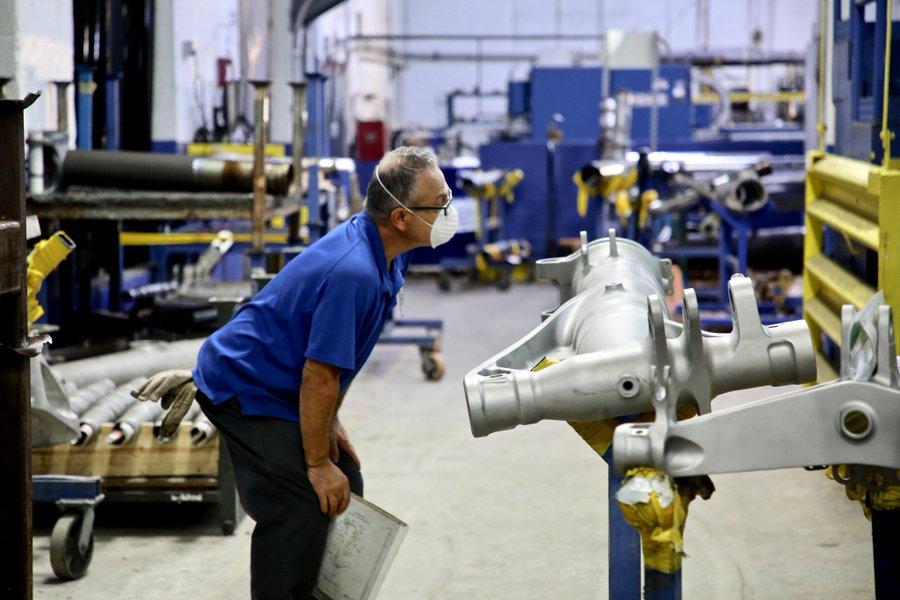
Airline maintenance is a lagging indicator of global passenger and cargo demand.
Aircraft flown less frequently or parked rob maintenance, repair, and overhaul (MRO) suppliers of future revenue. This usually leaves MRO providers reacting to trends. Conversely, when demand picks up, maintenance shops adjust by adding workers. In a normal demand cycle, this plays out seasonally at the biggest shops, where scores of skilled technicians are brought in to manage surges that coincide with carriers’ off-peak seasons.
The current environment is anything but a normal demand cycle.
The loss of skilled labor—pilots, dispatchers, front-line workers, and management—will be severe, and it has only just begun. For the maintenance industry, the cuts will be deep, too, but the scars could be bigger.
Steadily increasing demand for most of the last decade created staffing pressure throughout the MRO world. Now, the rapid drop has started an exodus, and it is bound to grow as MRO providers adjust to whatever becomes the new baseline.
An Aeronautical Repair Station Association (ARSA) survey provides arguably the clearest picture yet of what MRO providers have done. The 114 MRO firms that responded to the June 2020 survey—most of them part of the U.S.-based sector that employed 194,000 workers as of January 1, Oliver Wyman data show—reported an aggregate headcount reduction of 27% in 2020. In raw numbers, their payrolls dropped to 8,700 from 11,900.
The 25% reduction roughly corresponds with announced cuts at some major MRO providers, such as GE Aviation. The figure could grow if the COVID-19 pandemic lingers, forcing travel restrictions that cut regions off from the rest of the world, or—as is the case in the U.S., for instance—decimates normally robust domestic demand.
“Maintenance companies are desperate to hold on to the technical talent they’ve worked so hard to cultivate,” ARSA EVP Christian Klein said. “It’s extremely disheartening to watch all these layoffs happen in an industry that just a few months ago was facing severe worker shortages.”
Big picture: furloughed workers face a tougher environment thanks to the pandemic’s ramifications. Picking up work at a restaurant or as a ride-share driver is out of the question in many places. But skilled aviation maintenance workers may have more options than most.
Skills such as those needed to be a turbine engine mechanic are highly coveted—one of the reasons the aviation world has been battling a shortage of skilled technicians. Among the U.S. industries that are faring better than aviation during the pandemic is over-the-road trucking.
Travel restrictions put in place in March and April put a large dent in truck tonnage figures—similar to what happened with passenger carriers. Unlike the airlines, however, the for-hire trucking industry was nearly back to pre-pandemic activity levels by July, the American Trucking Associations reports.
Interestingly, the truck-mechanic world also has been scrambling amid a shortage of technicians. The pandemic may help trucking out—not by reducing demand, but by redirecting skilled workers from other industries that can no longer keep them on payrolls. Trucking isn’t large enough to absorb all of aviation’s technical job losses. But every little bit of permanent migration by workers will increase the level of difficulty MRO providers will face when the skies finally brighten, and airlines again fill shops.
“This massive loss of technical talent is going to haunt aviation for years to come,” ARSA’s Klein said.
Note: An earlier version of this article mis-stated the number of survey respondents. This has been updated.





